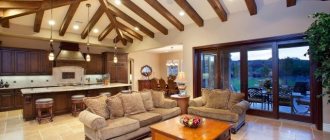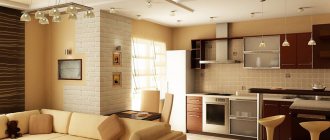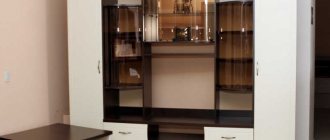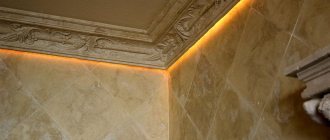Before you decide to start making a fireplace, it is worth recalling the basic concepts associated with installing this type of device.
DIY gas fireplace
A gas fireplace is a special device that operates by burning gas. There is a burner here, which is often controlled by a remote control. Gas is supplied via a pipeline or using cylinders.
Main components of this product:
- fireplace insert (heats and decorates the home);
- body made of cast iron (or special steel);
- burner with high gas supply power.
The fireplace requires cladding, since without it it cannot be used according to safety regulations.
Features of gas fireplaces
The ease of use of classic wood-burning fireplaces is questionable - it is necessary to prepare firewood or fuel briquettes, light the fireplace and constantly monitor it during combustion to avoid fire. In addition, the efficiency of wood-burning fireplaces is low, their efficiency does not exceed 15-20%, and the emission of harmful substances into the atmosphere is high due to incomplete combustion of fuel. Gas fireplaces for summer cottages are free from all these disadvantages: they are safe, easy to operate and do not require the preparation of firewood, kindling or constant monitoring.
The design of gas fireplaces determines their efficiency. The firebox of gas fireplaces is usually heat-resistant steel; the walls of the firebox have a ribbed surface, which increases the heat transfer area. Inside the firebox, in its lower part, there is a gas burner with automation sensors and a piezoelectric element.
This is interesting: Installation of water heated floors (video)
Biofireplaces using liquid and gel bioethanol
A biofireplace is a type of chimneyless fireplace that uses ethanol fuel, which produces a real flame but does not produce smoke, odors, or hazardous chemicals when burning. That is why such fireplaces do not require any special chimneys or ventilation ducts and can be installed almost anywhere. Biofireplaces using liquid and gel ethanol often belong to the same category of devices, since the basis of this fuel is alcohol. However, there are differences between them.
Fireplaces without a chimney are beautiful, efficient and fashionable.
Liquid ethanol alcohol is produced by fermentation of crops (rice, grapes, potatoes, sugar beets or cane). It gives a diffused fire of a bright orange color, with a thermal efficiency of 1.7 - 2.4 kW/hour. BTU/hour. One liter of fuel burns for approximately 2-4 hours, depending on the intensity of the combustion process and the height of the flame. It takes approximately ten minutes until the fire is sufficiently hot to reach rated performance. In biofireplaces using this type of fuel, alcohol is poured into a container and usually covered with a layer of porous ceramic material, so when the device is turned on, it is not the alcohol itself that burns, but its vapor. This makes the combustion process safe, since ethanol spillage is practically eliminated. The intensity of the flame can be adjusted by sliding the top cap of the fuel tank with a special steel lever, which is included in the factory fireplace kit. The devices are ignited with a long piezo lighter. Biofireplaces with automatic control have a remote control, with the help of which ignition, regulation of the flame height and shutdown of the device occur remotely.
Biofireplace VERONA with liquid bioethanol
Gel bio fireplace
Gel biofireplaces have an even yellow flame, the height of which cannot be adjusted, since the fuel tank is a can with gel filler with a thermal efficiency of 0.7-0.9 kW per hour. To increase the burning intensity of a biofireplace, you can simply install several of these containers, so when purchasing such a biofireplace, you should pay attention to models with several heating sources. The gel is made from pure isopropyl alcohol, thickeners, water and salt, which creates the crackling effect of burning wood. After thirty seconds of ignition, the flame reaches its maximum height. Although gel bio fireplaces are more similar to traditional wood fireplaces than liquid ethanol bio fireplaces due to the characteristic burning sound, they are considered less safe, since the cans of gel, which are simply installed on the base of the device, can tip over.
Homemade gas fireplace
Nothing prevents you from assembling a fireplace with your own hands. There is nothing complicated about this; the assembler will need straight hands and good tools. The gas burner for the fireplace is the heart of the device. It is installed in a pre-prepared metal frame and connected through a control valve to a gas cylinder through flexible hoses. It is also possible to install it in full brickwork.
In general, a homemade gas fireplace will cost much less than its factory-made counterparts. The price of one refractory brick will cost 45-50 rubles; you only need a few dozen of them to equip a firebox. The outer part of the combustion chamber is already laid out from ordinary brick, and the portal is finished in a similar way. To install the masonry, a special fire-resistant mixture is purchased - it is sold in many hardware stores. All that remains is to equip the finished fireplace with a chimney and burner.
A metal fireplace will cost the cost of sheet iron. Choose sheets with a thickness of at least 3 mm so that they do not burn under the influence of a flame. The portal is made from any available building materials, including brick. If you are too lazy to tinker, buy a ready-made portal - the prices for them are not as high as for the fireboxes themselves.
Gas fireplaces have fairly high prices. Their cost reaches up to 500 thousand rubles and even more. Therefore, before purchasing, you need to read the reviews of the owners.
Faber The BUZZ, Alexander, 37 years old
Before buying a gas fireplace, I looked for reviews on the Internet - there were very few of them. My gaze fell on a portable model that could be placed on a barbecue area and enjoy the warmth in the autumn cold. Apparently, Faber is the leading brand, since I didn’t find anything else in our stores. I bought it, installed it on the site, and am completely satisfied with the purchase - it lights up easily, does not make noise, and does not require additional firewood. I connect it to a large gas cylinder, enough for a month with regular use. But the prices for all these fireplaces are simply inadequate - I bought this one for 123.5 thousand rubles. Everything else is even more expensive.
Napoleon BGD36, Leonid, 42 years old
I don’t know what can be said about a gas fireplace - it works and works, there is a flame, there is an imitation of wood in the firebox. It is controlled from a remote control; for installation, a small niche was assembled from brick, as if replicating a real wood-burning fireplace. The niche was decorated with plaster, plaster and ceramic tiles, and a couple of figurines were placed on top. The gas pipe from the main gas pipeline fits on the side; we painted it white so that it does not stand out against the background of the decorative baseboard. The flame is quite realistic, except that it does not crackle. The power is 5 kW, but it will not be possible to use the fireplace as an independent source of heat - this heat flies out into the chimney. But as a worthy interior decoration, it’s worth taking.
Faber Fyn 450, Anton, 32 years old
It would be better if I took a biofuel model - it would be less hassle. It all started with problems with gas workers. They did not allow us to install a gas pipe in the wall. There were no logical explanations for the refusal, it was impossible and that was that. Somehow they agreed that she would not go in the middle of the wall, but closer to the floor, although this is also a violation. Initially, they generally told us to bring it from above, but the issue was finally resolved. The firefighters began to quibble with the chimney - they demanded that it go out from the windows at a distance of at least a meter (it turned out less). The problem was solved, but they demanded that an vent be made in the room - and this was with a unit with a closed combustion chamber. I made an vent and, after acceptance, filled it with gypsum plaster. The fireplace itself was disappointing due to the constant activation of the extinction protection, so I had to call a service technician. I spent a lot of money, but got one headache.
Making your own oven
The stove maker is a highly respected and responsible construction profession. They have always been revered in Rus'.
No design is subject to such high demands as a stone stove, because if it does not heat well or smokes heavily, life in the house will become unbearable. And the necessary experience and skills can only be acquired through experience, including unsuccessful ones.
If you decide to carry out all the work yourself, you should carefully and painstakingly study all available sources of information. It is better to choose the simplest project for implementation. But even in this case, no one can guarantee that the stove will be built correctly and nothing will have to be redone.
Laying a stove is a complex and responsible process, but doable
But if you have the quality of perseverance and have a lot of free time, you can save a lot on building a stove.
Popular designs of gas fireplaces for country houses
- Burners. The liquefied gas burns in the burner, the decomposition products, heating to high temperatures, flow around the radiator, heating the fireplace. The operating principle is similar to a conventional kitchen oven.
- Fireplaces with a flameless heating system. An infrared burner is installed in the center of the fireplace, which is responsible for heating the unit.
- Fireplaces with catalyst burners. When mixed with oxygen, the gas from the cylinder does not ignite, but succumbs to the oxidation process on the catalyst grid, releasing heat at low temperatures.
In a gas infrared fireplace, the surface heats up to 1100 ºС, in units based on nozzles – up to 800 – 850 ºС
Please note that hot air in the room absorbs oxygen and leads to a decrease in humidity levels, so it is very important to ensure supply and exhaust ventilation in the house
The advantages of using bottled gas include the fact that its combustion does not produce toxic substances, which cannot be said about non-gasoline or diesel burners. It has long been known that gasoline, for example, emits carbon monoxide, which can cause poisoning of the body. The amount of soot and fuel residues formed fluctuates within 0.01%, efficiency is at the level of 95-98%. It's different for different models.
You can refill cylinders at gas stations, and connecting to the system takes just a few minutes. Gas fireplaces of modern types are equipped with automatic control systems, which greatly simplifies their operation.
Often what stops people from buying a gas fireplace for a summer cottage under a cylinder is the high cost of such a unit and the high cost of gas. At first glance, it may seem that burning an ordinary brick stove with wood is much more profitable, but if you dig deeper and understand the intricacies of how gas fireplaces work, your opinion may radically change.
Video - Gas fireplaces
In some models, the burner is covered with ceramic heat-resistant false coals or logs - the gas leaving the burner hits the “firewood” and beautifully flows the flame around it, thereby creating the effect of burning wood. The upper part of the firebox forms a smoke collector, which turns into a chimney. The front part is usually closed with doors with heat-resistant glass, ensuring fire safety, but there are also open models.
Fire in a gas fireplace
The fireplace is controlled either from the panel on the front side or from the remote control. Gas fireplaces with automation are equipped with a controller that regulates combustion, as well as sensors for stopping the gas supply, loss of draft, and flame extinction. In case of any violation of the operating mode, the fireplace turns off, which makes it safe to use. Gas fireplaces must be connected to an electrical outlet or battery to ensure all sensors and the controller are working.
Installation of a gas fireplace for a summer house depends on its type. In this case, it is necessary to comply with the manufacturer’s ventilation requirements and ensure air access to the firebox through a special duct or chimney. It is better to entrust the connection of the fireplace to the main gas to a specialist, because in any case you will have to coordinate its installation with the local gas service. Fireplaces running on liquefied gas can be connected independently.
The chimney is made of materials resistant to corrosion and high temperatures, usually special steel. Ready-made prefabricated chimneys with a layer of thermal insulation are the most convenient; thanks to various elements, they can be brought out through walls or ceilings and extended to any length.
Table of fireplaces without chimney
Our permanent assortment includes biofireplace products from well-known European factories, differing in design, power, fuel container volume and weight.
| Name | Manufacturer | Fuel type | Number of burners | Material | Firebox capacity | Weight | Fire strip length |
| PAPA MANHATTAN | KRATKI (Poland) | Bioethanol | One | Steel | 0.4 l | 12 kg | < 400 mm |
| DELTA FLAT | KRATKI (Poland) | Bioethanol | One | Steel | 0.75 l | 13.2 kg | =400mm, <700mm |
| AF (silver) | KRATKI (Poland) | Bioethanol | One | Steel | 1.2 l | 21 kg | < 400 mm |
| BALL | KRATKI (Poland) | Bioethanol | One | Steel | 1.2 l | 28 kg | < 400 mm |
| QUEBEC | KRATKI (Poland) | Bioethanol | Two | Steel | 1.4 l | 45 kg | < 400 mm |
| GALINA | KRATKI (Poland) | Bioethanol | One | Steel | 0.4 l | 4 kg | < 400 mm |
| INDIA MINI | KRATKI (Poland) | Bioethanol | One | Steel | 0.4 l | 2 kg | < 400 mm |
| TANGO 1 white | KRATKI (Poland) | Bioethanol | One | Steel | 0.44 l | 3.5 kg | < 400 mm |
| ECHO black | KRATKI (Poland) | Bioethanol | One | Steel | 0.4 l | 7.8 kg | < 400 mm |
| MISA MINI graphite | KRATKI (Poland) | Bioethanol | One | Steel | 0.4 l | 4 kg | < 400 mm |
Security
Gas is a flammable substance, but despite this, gas fireplaces are considered one of the safest devices. Thanks to a multi-level tracking system, any emergency situations will be prevented.
From movies we know of cases when the gas supply is stopped and then resumed, the room will be filled with a toxic substance. Of course, you need to remember this danger, but not in the case of a fireplace. The gas dosing system is equipped with a special pressure sensor. It reacts to a decrease in pressure in the line and will turn off the supply in case of discrepancy.
Infrared sensors are fireplace position sensors. They react if the device suddenly falls. To avoid causing a fire, the gas supply system is turned off.
Small mobile unit
This is interesting: Heated floor power per square meter
Gas stoves
Gas used in cookstoves creates significant amounts of harmful combustion products that can affect home occupants. Gas burners produce nitrogen oxide and particulate matter. At high concentrations, these substances lead to headaches and allergies. If the hood above the stove does not have sufficient power, which leads to the spread of gas combustion products in the air. Use smooth metal ventilation ducts of a sufficiently large cross-section with a small number of bends. Do not use flexible ventilation ducts. If the hood is too small, it will not be able to perform its functions. Build vertical screens around the stove area to direct the flow of combustion products into the hood. Sometimes the hood is not used not because it does not work well, but because it emits excessively loud or unpleasant sounds. Choose the quietest kitchen equipment. Most kitchen fans are characterized by users as “noisy”. The best way to reduce noise is to mount an exhaust fan at some distance. You can place the fan in the attic, providing it with a vibration-proof enclosure. The use of hoods over gas stoves is necessary to maintain clean air in the kitchen. Combustion products from stoves, water heaters for bathrooms Combustion products from gas equipment can spread throughout the house if the exhaust pipe has a cross-sectional area that is too small, is clogged or has a backdraft. Gas distribution around the house is accompanied by an unpleasant odor, a high concentration of harmful substances in the air and a large amount of water vapor. If this condition becomes regular, health problems may arise: headaches, diseases of the respiratory system. The content of large amounts of carbon monoxide in the evaporation increases the risk to human health. If the pressure in the house is lower than the outside pressure by more than 5 Pa, then a backdraft is formed or combustion products from gas equipment spread throughout the premises. Ensure that a sufficient amount of combustion air is supplied to each unit of gas equipmentEnsure that the air flow for all high-power exhaust fans, especially those with a capacity of 75 dm3/m2 or more, is correctly sized and directed accordingly. Instead of local fans, it is better to use a well-designed supply and exhaust ventilation system. Use gas water heaters with isolated draft, products combustion in which are isolated from the interior spaces of the house. The water heater can be placed near an outside wall. Use forced draft furnaces in conjunction with similar draft water heaters. Make sure that all pipe connections for combustion products are well sealed. Free air supply to the heater can be supplemented with a fan that will draw combustion products out. According to generally accepted practice, gas equipment and water heaters are placed outside the house
They are usually located in a heated garage adjacent to the house or in a specially separated boiler room. Particular attention should be paid to a sealed system of air barriers between the boiler room and the house. The air duct should be sealed to avoid the penetration of cold air from outside and a decrease in pressure. All channels must be thermally insulated
The temperature in the boiler room should not fall below +10 ° C. If a lot of time passes between the start of gas supply and its ignition, then many harmful substances are released into the air. To avoid this, if possible, use stoves of modern designs in which gas is supplied and ignited practically at the same time. The reason for the spread of combustion products throughout the house may be insufficient draft in the pipe. Do not use long and curving chimneys. Seal the joints in the chimneys to prevent air from entering the pipe. Prevent air from entering the pipe from outside, because this impairs draft. The problem is described in more detail later in the section “Ventilation: Health and Safety Aspects.” Backdraft caused by wind causes combustion products to enter the house. To prevent this phenomenon, use chimney nozzles that enhance draft. There should be no tall trees near the chimney. Increase the height of the chimney.
Device structure
Different manufacturers provide numerous options for gas fireplaces to choose from. But if you understand their structure, you can identify single key nodes that perform strictly defined functions.
Suspended version of the fireplace system
- The gas combustion process occurs in the furnace. It is this that determines the type of fireplace and can be open or closed.
- The smoke collector concentrates combustion products before they enter the chimney. Its purpose is to ensure that carbon monoxide evaporates without loss and does not remain in the room.
- Do not forget that the main purpose of such a fireplace is heating, so the heat exchanger is a mandatory part. With its help, heat is released from the increased area.
- The gas supply to the direct place of its combustion is provided by a gas burner.
- Dummy firewood.
- Flame control system.
With this configuration, it is not difficult to imagine the operating principle of the fireplace. After switching on, which is done from the control panel, gas supply begins. At the same time, automatic ignition occurs, which works thanks to the piezoelectric effect. Temperature sensors send a signal to the controller and “monitor” the air condition in the room. When a certain temperature is reached, the gas supply decreases and the flame intensity drops.
Relaxation area in the apartment space
The fireplace deserves its name due to the fact that there is no need to install a chimney or maintain its height to ensure the required draft. The burnt gases are discharged through a special pipe through the wall to the street. It is also possible to equip an apartment with such a fireplace, but this requires permission from the management company.
Biofireplaces with electronic burners
Biofireplaces with electronic burners EVO PLUS are the latest generation injection-type biofireplaces . Unlike common steam burners (in which bioethanol vapors burn, and therefore liquid bioethanol is first converted into a vapor state and then supplied for combustion with the help of fans), injection-type burners produce a more realistic and high flame, provide fast and safe ignition, and faster start-up. At the same time, due to reduced fuel consumption, greater operational autonomy is ensured
GlammFire automatic fireplaces
- very realistic live fire;
- quick switching on and accelerated ignition (about 20 seconds after switching on, and not several minutes, like with fireplaces from many other manufacturers);
- increased reliability thanks to a simple, innovative design;
- modern minimalistic design;
- firing line (cm): 40- 60- 80- 120- 160- 200- 240 and non-standard designs to order;
- compactness: very narrow body - only 21 cm ;
- control: automatic from the remote control or from the control panel with display built into the burner;
- reduced fuel consumption;
- material: INOX (stainless steel) . Basic option: brushed stainless steel. Option: polished stainless steel;
- possibility of exclusive finishing: black titanium coating (not paint!) , beautifully reflecting the reflections of fire;
- safety: everything is under control thanks to a comprehensive sensor system ;
- power supply: from a built-in rechargeable battery 12 V or a remote power supply 220/12 V. No mandatory 220 V electrical connection is required .
Manufacturers of bottled gas fireplaces
Choosing a gas fireplace is a responsible matter. Your task is to choose high-quality and reliable equipment with good functionality.
- Cheminees Philippe, from a French manufacturer. These are fireplaces that have stood the test of time. The company has a fairly wide range of products, so everyone can find a suitable model for their needs. Prices for fireplace models are more than affordable. In addition, they are decorated perfectly.
- Gutbrod Keramik, German manufacturer. The company specializes in the production of gas stoves for heating homes and has a fifty-year history of manufacturing fireplaces. Reliability, quality, increased heat transfer, attractive appearance and high efficiency - this is all about fireplaces of this brand.
- Waco&Co, Belgian production. The company produces gas fireplaces for country houses, burning wood and gas. In addition, demanding customers will appreciate exclusive models. Originality of design, expensive finishing, high functionality and reliability of equipment characterize this brand.
- Element4, produced by a Dutch company. They have a modern, laconic design, nothing superfluous, as they say. The main feature is the breathtaking view of “live” fire. The finishing of the body is quite simple, the impeccable automated system makes it possible to minimize the maintenance of the fireplace. Also, a very affordable price can attract buyers.
- Napoleon, USA, produces the Patioflame fireplace table, which is ideal for highlighting a relaxation area in VIP establishments. The fireplace can be installed on the terraces of penthouses or in prestigious country houses.
Types of energy carriers used
Before moving on to choosing a particular furnace model, you should decide on the type of energy that will be used.
In modern conditions, there are three most common ones:
- electricity;
- natural gas;
- firewood or other solid fuel.
The advantages of the first two are obvious - they can work without a chimney. However, the use of electricity is quite expensive, and the use of natural gas requires the presence of an appropriate centralized engineering network at the dacha site.
Electric heaters - a compact and convenient option for a block container
In addition, in this case you will depend on the uninterrupted functioning of utility networks. For example, in the event of a power outage, the electric furnace will not work. The only thing that will help is renting a diesel generator for your dacha.
As an alternative, the following coolants are widely used:
- pallets - granules, the production of which uses wood pulp remaining as waste during furniture or other similar production;
- biofuel is a gas created as a result of processing biological materials.
Photo of a stove for a wood-burning country house
There are other options, but their use for country houses is irrational and expensive.
After all, a compact stove for a summer residence should have the following advantages:
- efficiency;
- ease of operation.
When choosing a model, you should focus on the fuel that is most common and cheap in your region. If the country house is not intended for year-round use, it is advisable to choose inexpensive models designed to use solid fuel.
As for other factors, it all depends only on your individual preferences and needs.
Foreign and domestic manufacturers offer many options:
- huge and small;
- expensive and not very expensive;
- standard and sophisticated.
For special connoisseurs, there is even a stove for a summer house with a stove bench, which will perfectly complement the interior of the house, made in the old Russian style.
Russian stove with a stove bench - for true connoisseurs











